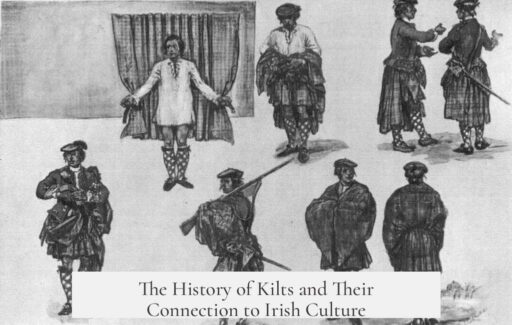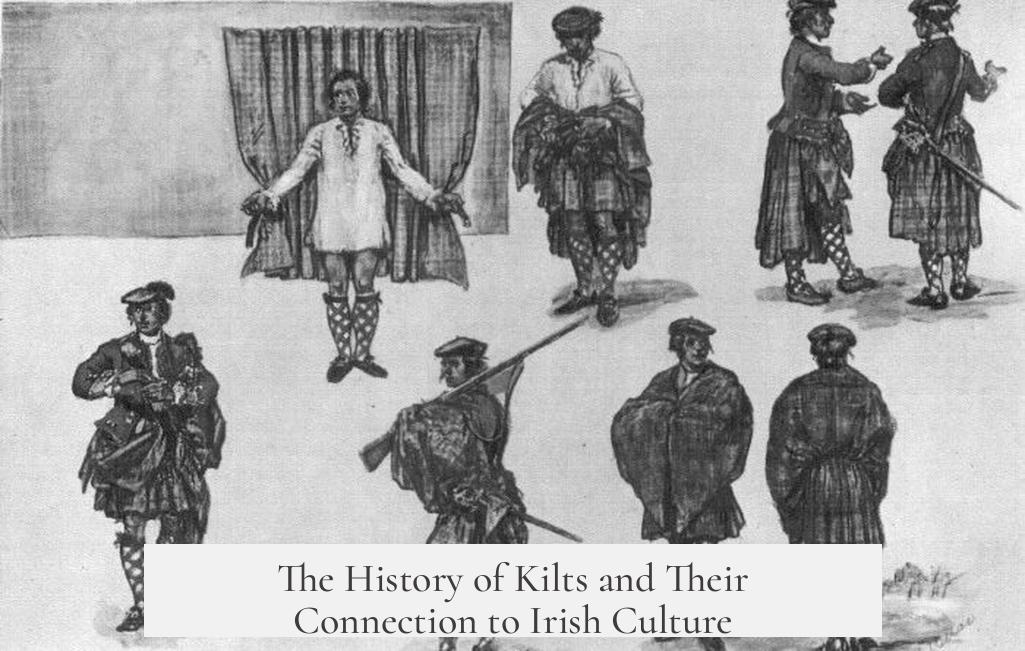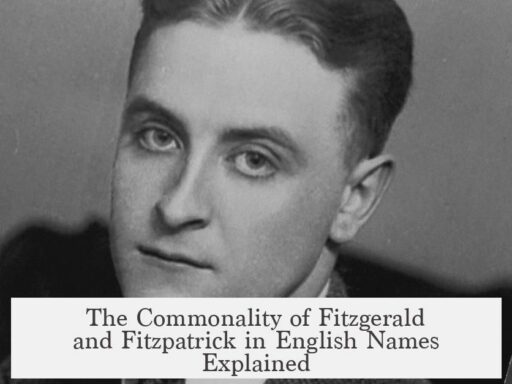The Irish did not wear kilts in ancient times, but the garment that evolved into the kilt existed in medieval Ireland. Both Ireland and Gaelic Scotland shared a cultural and linguistic unit in the medieval period, wearing similar clothing. However, neither region wore kilts as they are known today. Instead, people wore large wool mantles, wrapped as outer garments.
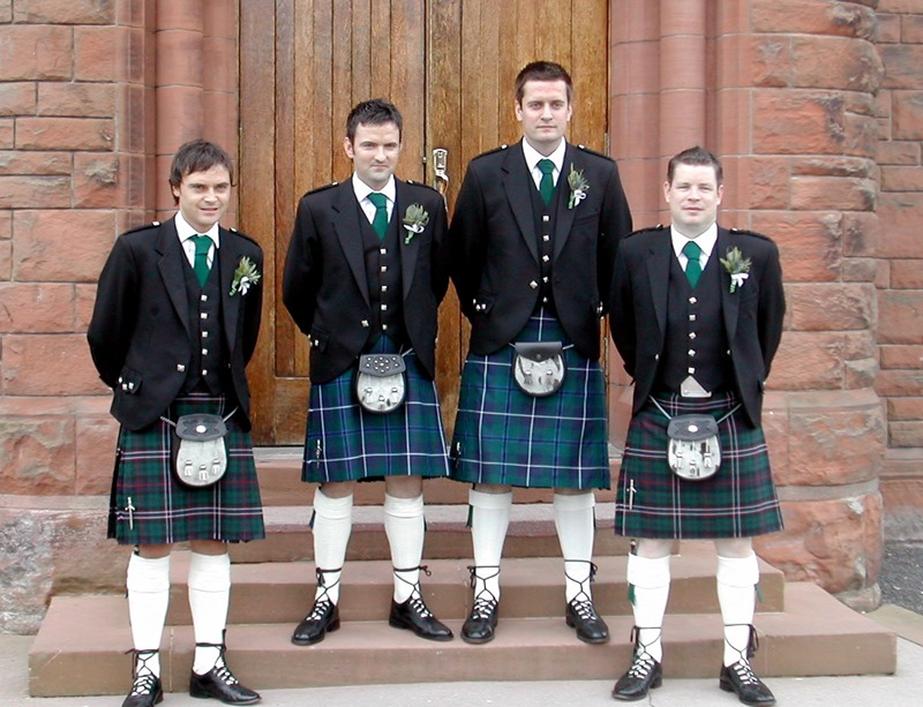
The development of the kilt began with changes in how these mantles were worn. The earliest mention of a kilt-like garment appears in a 1594 Irish text describing Scottish Gaelic mercenaries in Ireland who pleated and belted their mantles, unlike the Irish who did not.
The word “plaid” comes from Scottish Gaelic, meaning blanket or cloak. Kilts did not originally require tartan patterns; they were sometimes plain or striped. Men gathered and pleated the lower half of the mantle, securing it with a leather belt, and draped or wrapped the upper half based on need or preference. This style is known as the great kilt. Women continued to wear mantles without pleats or belts.
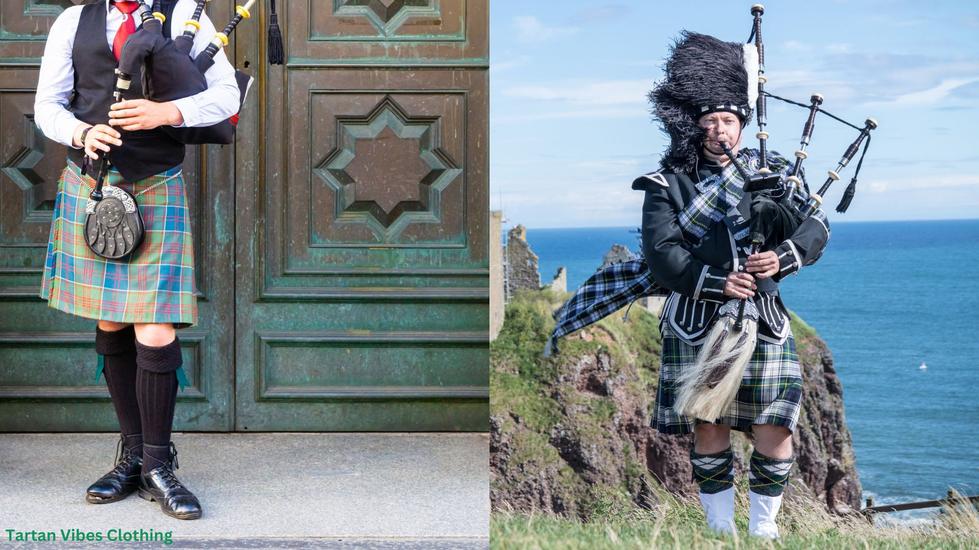
By the late 18th century, the great kilt evolved into the smaller, sewn pleated kilt seen today. This change likely related to the Industrial Revolution and the rise of factory work in Scotland, requiring more practical attire.
The kilt was only introduced widely into Ireland in the early 20th century as part of pan-Celtic cultural movements. These efforts connected various Celtic peoples—Irish, Scottish, Manx, Welsh, Cornish, and Breton—through their shared language struggles and opposition to English or French dominance. The kilt became a visual symbol of Celtic identity and resistance, and was adopted in Ireland as a statement of cultural pride.
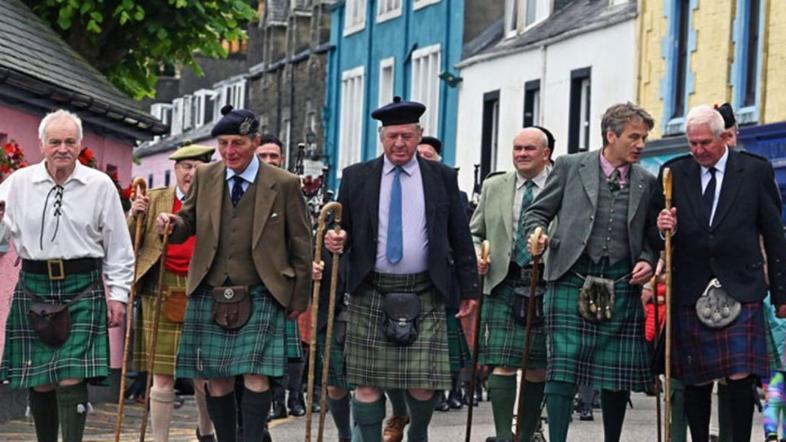
| Period | Clothing | Kilt Status in Ireland |
|---|---|---|
| Medieval | Wool mantles (unbelted) | No kilts worn |
| Late 16th Century | Pleated and belted mantles in Scotland | Irish did not wear kilts |
| Late 18th Century | Small sewn kilts appear (Scotland) | Still no kilts in Ireland |
| Early 20th Century | Kilts adopted in Ireland | Symbolic pan-Celtic usage |
- Medieval Ireland and Scotland shared clothing customs but did not wear kilts.
- Kilts developed in Scotland, first mentioned in 1594 as pleated, belted mantles.
- The small kilt evolved in late 18th-century Scotland, linked to industrial changes.
- Kilts were introduced into Ireland only in the 20th century as a cultural symbol.
The Irish and Kilts: Untangling the Threads of History
So, were kilts ever truly Irish? The short answer: no ancient Irishman strutted around in what we now call kilts—but it’s not that simple. Let’s dive into the fascinating story of how Ireland and kilts intersect, or rather, how they almost miss each other on the fashion runway of history. Spoiler alert: the iconic pleated Scottish kilt is a bit of a latecomer in Irish wardrobes.
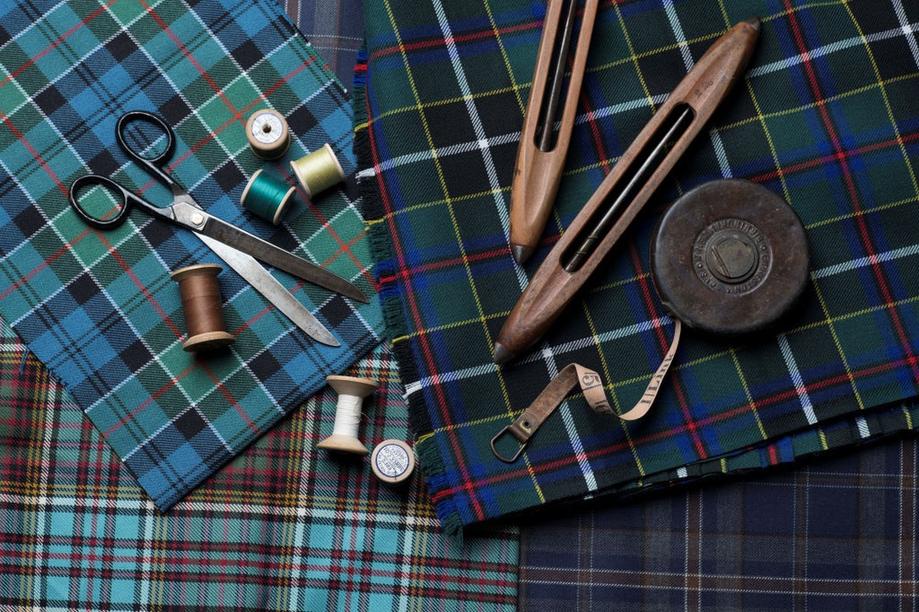
Picture this: medieval Ireland and Gaelic Scotland weren’t just neighbors; culturally, they were like siblings sharing the same language and dressing in remarkably similar ways. Yet, none of these medieval folks wore the kilt. Instead, they wrapped themselves in mantles—large woolen cloaks that shouted warmth and style before “fashion” was even a thing.
What Did Medieval Irish and Scots Really Wear?

Back in the day, both Irish and Scottish Gaels sported a mantle. This wasn’t some flimsy shawl tossed over a shoulder but a hefty, woolen blanket-cloak, wrapped around the body with intention. Think of it as the medieval version of a cozy winter jacket, but with more flair and trickery in how it was worn.
The mantle was versatile, functional, and quite the cultural glue between these two regions. It did the job for warmth, status display, and even battle readiness, but it wasn’t the kilt.
The Birth of the Kilt: A Scottish Innovation
Fast forward to 1594—this is where things get juicy. An Irish text, no less, points out something very Scottish: Scottish Gaelic mercenaries fighting in Ireland were pleating and belting their mantles. This suggests these soldiers wore a new style that caught Irish eyes because it was different from their own traditional attire.
The key term here is plaid—a Scottish Gaelic word meaning “blanket” or “cloak.” But hold your horses: plaid back then wasn’t necessarily tartan-colored. These garments appeared in plain or striped cloth, giving some street cred to minimalism centuries ago.
Men began pleating the bottom of their mantles and securing it with leather belts. The top part draped in various ways depending on mood, weather, or maybe what tune was playing in the local tavern that day. This garment, known in English as the “great kilt,” was a game-changer in Scottish fashion history.
Interestingly, women kept wearing the classic unpleated mantle. It seems the kilt was a distinct male sartorial invention whose pleats and belts whispered tales of practicality and identity.
By the late 18th century, kilts evolved. Those loose pleats became sewn in, and the garment split into what we now call the “small kilt” or modern kilt. Industry changes like factory jobs demanded a more practical outfit. You can almost see the kilt adapting to the rhythm of the industrial revolution’s buzz.
When Did Kilts Step into Irish Wardrobes?
This is where the story takes a playful twist. Although Ireland didn’t historically don kilts, the early 20th century saw them making a surprise entrance. Why? Well, this coincided with a pan-Celtic movement—think of it as a Celtic team-building exercise spanning Irish, Scottish Gaelic, Manx, Welsh, Cornish, and Breton communities.
Each Celtic group had unique histories and customs but shared a common challenge: surviving under English or French dominion. To celebrate their shared linguistic roots and struggles, some pan-Celtic enthusiasts adopted the kilt as a bold banner of Celtic identity—not Englishness.
The kilt was not originally Irish but became embraced by some Irish groups as a powerful symbol, a stylish declaration of Celtic pride. So it’s fair to say the kilt sashayed into Irish culture only recently, and partly as a borrowed emblem.
Summary: What Does This Mean for the Irish and Kilts?
| Question | Answer |
|---|---|
| Was the kilt worn in ancient Ireland? | No, but garments that evolved into kilts existed. |
| Has the kilt been worn in Ireland recently? | Yes, especially in the past 100 years, mainly due to pan-Celtic cultural movements. |
| Is the modern kilt originally Irish? | No, it’s a Scottish evolution that Ireland later adopted symbolically. |
Why Does It Matter?
Knowing the nuanced history of the kilt helps us appreciate cultural identities without mixing the threads. It reminds us that symbols like the kilt carry layered histories. They ripple with meaning beyond just fashion; they reflect stories of language, land, and survival.
Imagine an Irish festivity without a kilt today. It might seem odd—but with the pan-Celtic movement and modern cultural blending, kilts now appear as charming guests at Irish gatherings. Probably enjoying some Irish stew while wearing their stitched-in pleats.
A Little Food for Thought
Would wearing a kilt in Ireland today feel like cultural appreciation or cultural borrowing? Is identity something fixed, or does it evolve like clothing styles adapting to factory whistles?
And what about the Irish mantle, the precursor to the kilt—should it get an upgrade on the cultural fashion stage? Maybe the humble Irish mantle deserves a comeback.
Practical Tips for Kilt Lovers and Irish Culture Buffs
- If you want to honor Irish heritage, skip the immediate kilt assumption—explore the mantle and other traditional Irish garments like léine or brat.
- For Scottish-Irish fusion events, using kilts symbolically can work if you know their heritage and explain the story. Education spices up every party.
- Ask yourself: Is the kilt just a pretty pleated skirt, or a badge with centuries of meaning? Wearing it thoughtfully shows respect for its origins.
So the next time someone insists all Irish wear kilts, you can proudly share this rich tale. Kilts are a Scottish-born masterpiece, arriving fashionably late to Irish shores as a symbol of shared Celtic pride, not ancient Irish tradition.
History woven in wool, indeed.
